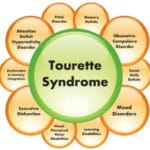Unleashing the Power Within: A Deep Dive into Volcano Metaphors
We often hear phrases like “about to blow their top,” instantly connecting someone’s anger to a volcano. This is because volcanic metaphors are potent tools in writing, drawing parallels between the awesome power of a volcano and complex human experiences.
Think of volcanoes as Earth’s pressure cookers: harboring immense energy beneath the surface until, BAM! Everything erupts. This natural phenomenon mirrors our own experiences with overwhelming emotions, suggesting a powerful connection between the natural and emotional worlds.
Volcanoes: More Than Just Eruptions
Volcanoes are often used to describe a range of human emotions. Just as a volcano erupts with fiery intensity, our feelings, too, can burst forth, reshaping the landscape of our lives.
But volcanic metaphors go beyond fiery outbursts. Sometimes, emotions simmer beneath the surface like a dormant volcano, hinting at their potential power. This duality—calm exterior versus potential force—makes the volcano metaphor particularly apt for exploring the complexities of human nature.
When we use volcanoes as metaphors, we tap into profound human experiences: passionate love, burning desire, and the simmering tension of repressed emotions. This metaphorical connection suggests that our inner world, like the Earth itself, is in a constant state of flux.
What makes the volcano metaphor so fascinating is its capacity to represent both destruction and creation. Volcanoes, while capable of obliterating everything in their path, also give rise to new life from the ashes, mirroring the cyclical nature of emotions and highlighting their potential for transformation.
Volcanic Metaphors in Literature
Authors and storytellers frequently employ volcanoes in their narratives, recognizing their power as symbols of unpredictable events, inner turmoil, and major turning points.
Consider Emily Dickinson’s poem “A Still—Volcano—Life.” Dickinson uses the image of a dormant volcano to represent the quiet intensity of a person’s inner life. The volcano, though seemingly calm on the surface, possesses a hidden power waiting to be unleashed. This comparison suggests that outward appearances can be deceiving and that even the quietest individuals may harbor depths of passion and potential.
A reporter once asked Jon Krakauer if he had any advice for future trekkers to Mount Everest. Krakauer replied, “Don’t go.” This advice, much like a volcano, speaks to the unpredictable and potentially dangerous nature of venturing into the unknown, whether it’s a mountain peak or the depths of human emotion.
John Krakauer’s “Into Thin Air,” a gripping account of the disastrous 1996 Mount Everest expedition, further emphasizes this point. The book not only recounts Krakauer’s personal experience but also serves as a chilling account of the perils of overcrowding on the world’s highest peak. This real-life example connects to the volcanic metaphor by highlighting how venturing into the realm of intense emotions, like those experienced on Everest, can lead to unpredictable and potentially devastating outcomes.
“Erupting in a Volcano of Emotion”: Deciphering the Metaphor
The phrase “erupting in a volcano of emotion” paints a vivid picture of overwhelming feelings bursting forth. It’s a powerful image, often used to describe intense anger, but it can also encompass any emotion experienced with overwhelming force.
Just as a volcano builds pressure over time, leading to an eventual eruption, so too can our emotions accumulate until they can no longer be contained. This build-up and release mirror the way we experience and express intense emotions.
This metaphor is powerful because of its relatable imagery and universal application. We instinctively understand the destructive potential of a volcano, and we can easily connect that image to the feeling of losing control when overwhelmed by powerful emotions.
Extending the Metaphor: Beyond a Single Eruption
Extended metaphors, like the “volcano of emotion,” take a comparison and stretch it across sentences, paragraphs, or even entire works.
Think about the different stages of a volcanic event. Before the eruption, there are warning signs: tremors, smoke, and rising heat. These can be compared to the subtle cues we might experience before an emotional outburst, such as increased heart rate, shortness of breath, or a feeling of being overwhelmed.
The aftermath of a volcanic eruption, while initially devastating, often leads to the creation of fertile land. Similarly, processing intense emotions, though initially challenging, can lead to personal growth and increased self-awareness.
Emily Dickinson’s “A still — Volcano — Life” serves as a prime example of an extended metaphor. Dickinson doesn’t just mention the volcano in passing; she weaves volcanic imagery throughout the entire poem. This sustained comparison deepens our understanding of the subject, suggesting a connection between the unpredictable nature of volcanoes and the hidden depths of the human experience.
Key Points of the Extended Metaphor of Volcanic Eruptions:
- Relates volcanic power to human emotions: Volcanoes erupt with immense force, just as emotions can erupt from within us.
- Symbolism of hidden intensity: Volcanoes appear calm but contain hidden power, mirroring the internal emotions of individuals.
- Exploration of human nature: Volcanic metaphors delve into the depths of human passions, struggles, and desires.
- Destructive and regenerative aspects: Volcanoes can destroy but also create new life from ashes, emphasizing the dual nature of emotions.
- Narrative potential: Volcanic metaphors drive plots by introducing conflicts or shaking up existing dynamics.
- Focus on the journey: The metaphor extends beyond the explosion, encompassing the buildup, warning signs, and aftermath of emotional eruptions.
- Symbol of renewal: Volcanic eruptions remind us that even in the face of overwhelming force, there is the potential for growth and change.
Volcanic metaphors, with their vivid imagery and capacity to convey a range of experiences, provide writers with a powerful tool for exploring the complex landscape of human emotion. By understanding the nuances of this metaphor, we can better appreciate its ability to enrich our writing and deepen our understanding of ourselves and the world around us.

















1 thought on “Unlocking the Eruption of Meaning: A Guide to Extended Metaphors Using Volcanic Eruptions”
Comments are closed.